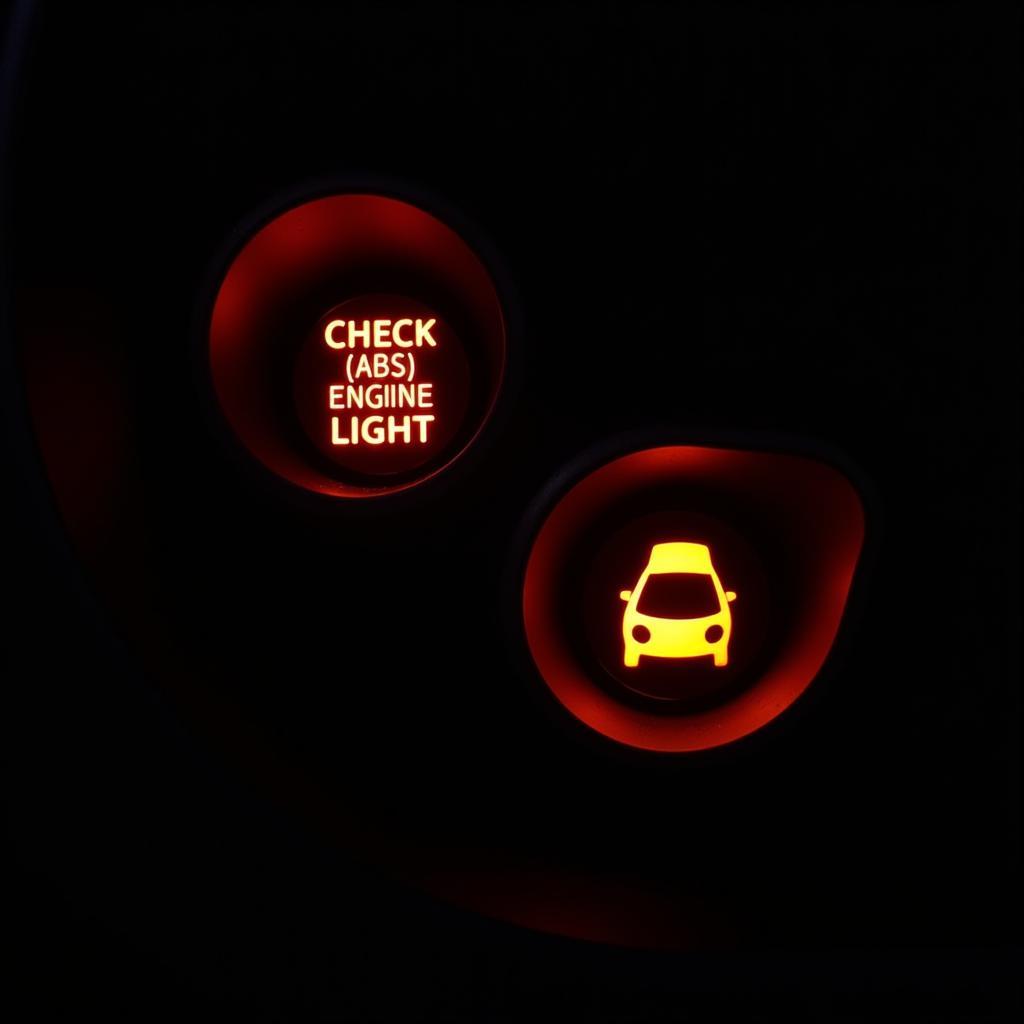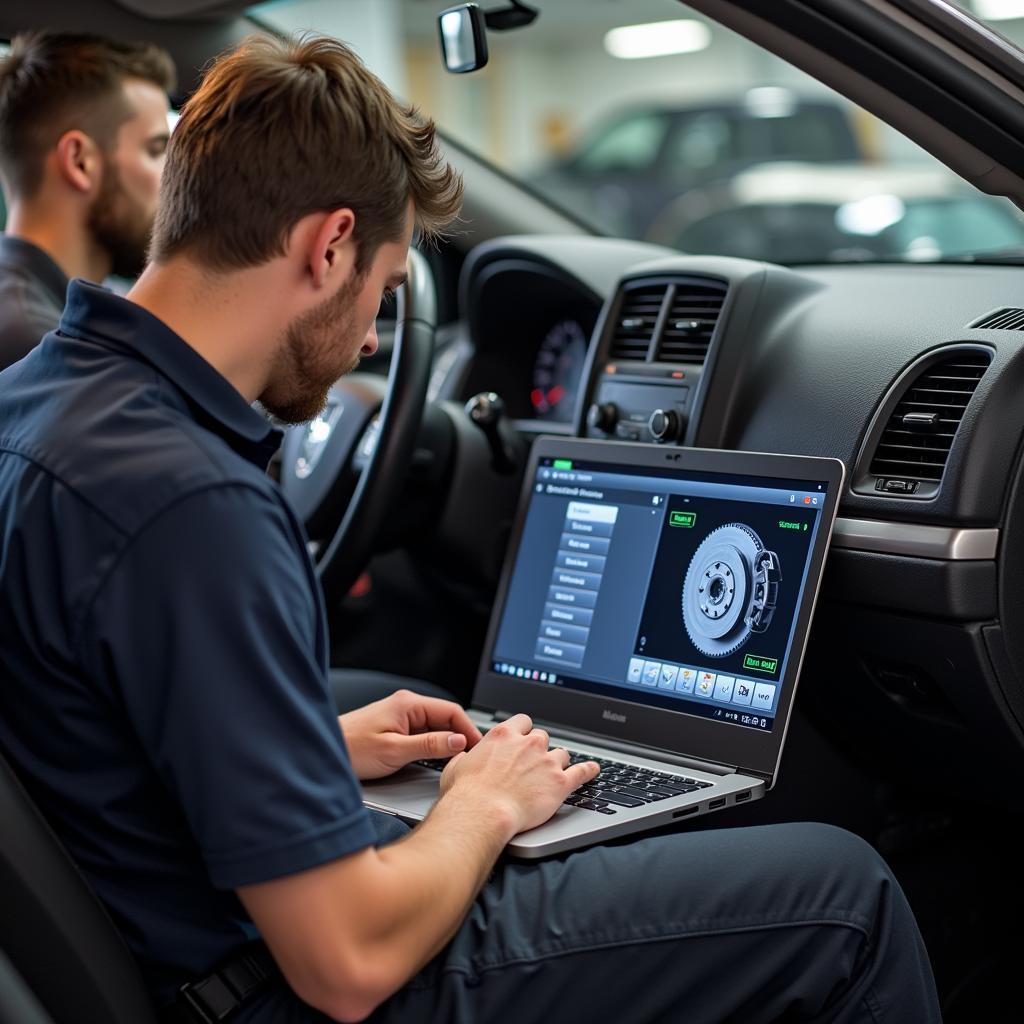Forward collision warning with brake support is a crucial safety feature found in many modern vehicles. This advanced driver-assistance system (ADAS) uses sensors, typically cameras and/or radar, to detect potential collisions with vehicles in front of you. If the system senses an imminent collision, it will provide a visual and audible warning to the driver. If the driver does not react in time, the system can automatically apply the brakes to help avoid or mitigate the severity of a crash.
Understanding Forward Collision Warning Systems
Forward Collision Warning (FCW) systems are designed to act as an extra pair of eyes on the road, helping drivers avoid frontal collisions. Here’s how they work:
- Sensors: The system uses forward-facing sensors, usually a combination of cameras and radar, to constantly monitor the distance and closing speed to vehicles ahead.
- Detection: When the system detects a vehicle in your path and determines that a collision is likely based on your speed and distance, it triggers a warning.
- Driver Alert: The warning is designed to be immediate and attention-grabbing, typically involving both visual cues (flashing icons or red lights on the dashboard or head-up display) and audible alerts (beeping sounds).
How Brake Support Works in Conjunction with FCW
While FCW provides critical warnings, brake support takes it a step further by actively assisting with braking if the driver doesn’t react quickly enough to the initial alert. Here’s how it works:
- Priming the Brakes: Once an FCW warning is issued and the system senses that the driver is not braking sufficiently, it will pre-charge the braking system. This action prepares the brakes for immediate and forceful application.
- Limited Braking: In some systems, brake support might start with a brief, autonomous braking jolt. This serves as a tactile warning to get the driver’s attention and encourage immediate action.
- Maximum Braking Force: If a collision is deemed unavoidable and the driver still hasn’t reacted, the system can apply maximum braking pressure, potentially significantly reducing the severity of the impact.
Common Causes of Forward Collision Warning Malfunctions
While forward collision warning with brake support is an incredibly valuable safety feature, it’s crucial to understand that these systems can occasionally experience malfunctions. Here are some of the most common reasons why your FCW system might not be working correctly:
- Sensor Obstructions: Dirt, debris, snow, or ice covering the front sensors can interfere with their ability to accurately detect objects ahead.
- Camera or Radar Misalignment: If your vehicle has been in an accident, even a minor one, it’s possible that the sensors might have become misaligned, affecting their accuracy.
- Electrical Issues: A malfunctioning wiring harness, blown fuse, or a problem with the vehicle’s battery can disrupt the power supply to the FCW system.
- Software Glitches: Like any computer system, ADAS systems rely on software that can occasionally experience glitches or errors.
- Component Failure: While less common, there’s a possibility of a malfunctioning camera, radar unit, or control module within the system.
 Car Dashboard Warning Lights
Car Dashboard Warning Lights
What to Do When Your Forward Collision Warning Light Turns On
If your forward collision warning light comes on or you suspect a problem with the system, it’s essential to address it promptly:
- Check for Obstructions: Visually inspect your front grille and bumper for any dirt, debris, snow, or ice that might be blocking the sensors.
- Consult Your Owner’s Manual: Your vehicle owner’s manual will provide specific information about the FCW system in your car model, including any troubleshooting steps.
- Schedule a Professional Diagnosis: If the warning light persists or you suspect a more serious issue, don’t delay in scheduling an inspection with a qualified mechanic specializing in ADAS systems.
Remote Software Programming and Calibration: The Future of ADAS Repair
The increasing complexity of automotive technology necessitates equally sophisticated repair solutions. Remote software programming and calibration are emerging as game-changers in the automotive repair landscape, offering a convenient and efficient way to diagnose and fix ADAS issues, including those related to forward collision warning with brake support.
Here’s how it works:
- Remote Diagnostics: Skilled technicians can remotely access your vehicle’s computer system via a secure connection to identify the root cause of the FCW malfunction.
- Software Updates and Reprogramming: In many cases, software updates or reprogramming can be performed remotely, potentially resolving glitches or compatibility issues.
- Calibration: After repairs or component replacements, ADAS sensors often require calibration to ensure they function correctly. Remote calibration tools allow technicians to perform this crucial step with high accuracy.
 Mechanic Performing Remote Diagnostics
Mechanic Performing Remote Diagnostics
The Benefits of Remote ADAS Services
Remote diagnostics, programming, and calibration offer several benefits:
- Convenience: No need to visit a repair shop, saving you time and hassle.
- Faster Repairs: Remote diagnostics expedite the troubleshooting process, leading to quicker repairs.
- Expert Support: You gain access to skilled technicians who specialize in ADAS systems.
Conclusion
Forward collision warning with brake support is an invaluable safety technology that can significantly reduce the risk of accidents. Understanding how the system works, common causes of malfunctions, and the importance of seeking prompt professional help will ensure you get the most out of this life-saving feature. The emergence of remote software programming and calibration further enhances the convenience and efficiency of ADAS repairs, marking a significant advancement in automotive technology maintenance.

